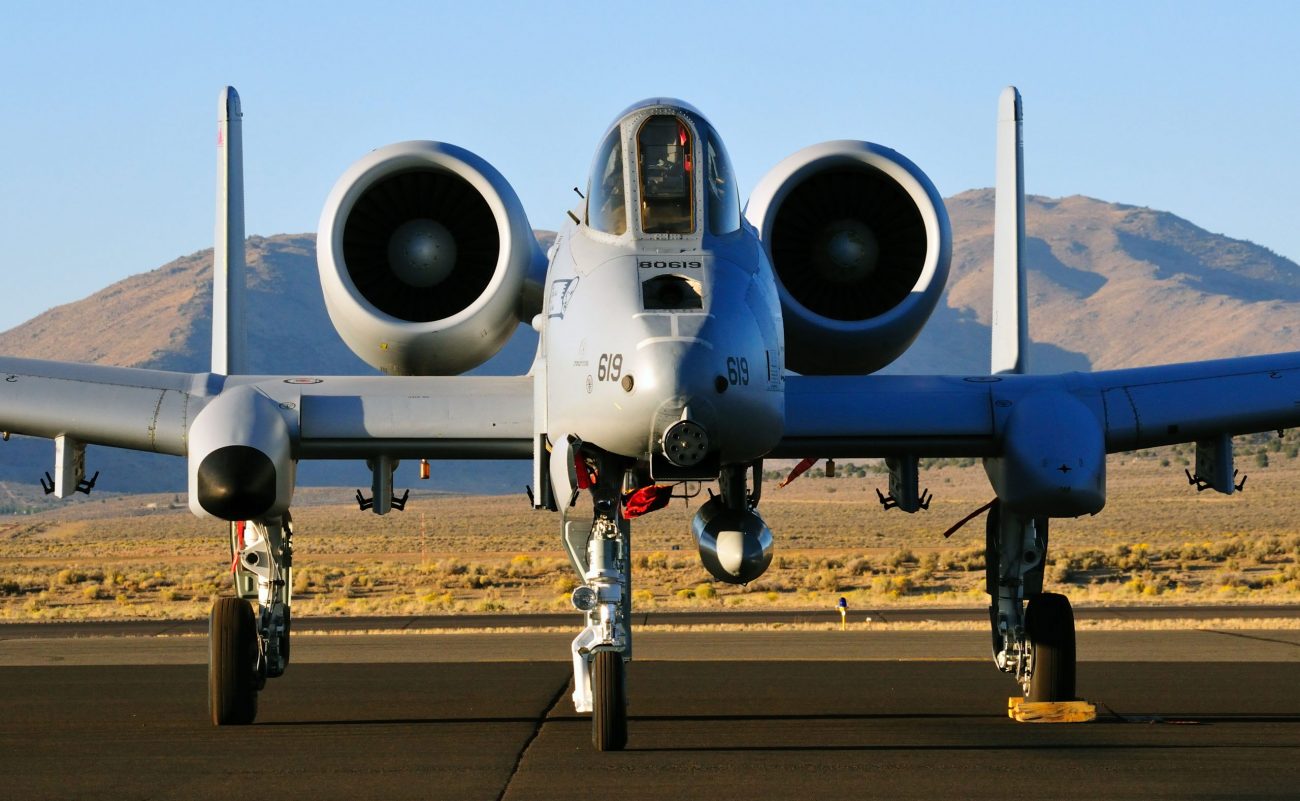One of the most iconic aircraft of our time, the A-10 Warthog, just can’t seem to leave the US Air Force (USAF). Not because its pilots or the service love it too much to let it go but because political exigencies with domestic electoral concerns prevent it.
The completely unorthodox plane was a symbol of American aerospace capability and prowess, striking fear into the hearts of enemy ground troops and tanks alike. An A-10 appearing overhead after responding to a close-air support (CAS) call meant a certain victory for ground troops.
The warplane was known for its GAU 30 mm Avenger rotating Gatling gun, which was famously—and largely accurately—described as a plane “built around a gun.” Made of depleted uranium-tipped rounds, it devastated tanks and bunkers alike, punching holes through the thickest armor.
A-10 Warthog: A Close-Air Support Plane
The A-10 also can launch a variety of air-to-ground missiles, bombs, and rockets. Faster air superiority fighters can’t fly low and slow to pick their ground targets or take a really good look at what they are hitting – a need in air-land battle when even the best electro-optical targeting systems can’t differentiate between friend and foe.
Even if they did, enemy anti-aircraft guns can easily tear through their soft bodies.
But the Warthog could do that, had a greater ‘loiter time’, and could take significant punishment by combat jet standards. The pilot sat around a titanium armor – rightfully called the ‘bathtub’ – 3.8 cm thick, that brought back pilots safe from even the most devastating ack-ack fire and shrapnel from air-burst rounds.
But all the plane’s unorthodox attributes were kept from being buried in the pages of history as the USAF plans to retire 42 of its 281 Warthogs were being opposed in the US Senate. These A-10s had been some of the oldest in operations.
It was part of a plan to help the service pay for a $2.2 billion increase in research and development. These include hypersonic weapons, the under-development B-21 Raider, and the Next Generation Air Dominance program.
As per the USAF’s 2022 fiscal budget request, it wants to phase out 201 Warthogs. Some reports said the A-10s are also causing a “shortage of mechanics for newer planes”, according to Lt Gen David Nahom’s statement before a House of Representatives hearing in July this year. Some of these are 91 new F-35s.
The A-10s, designed and developed by Fairchild Aircraft, have participated in the Kosovo intervention, Operation Desert Storm, Operation Iraqi Freedom, and Operation Enduring Freedom in Afghanistan.
Why A-10 Warthog Cannot Be Phased Out?
Leading the effort against the A-10’s retirement was Senator Mark Kelly from Arizona, the state in which the planes are based, the Davis-Monthan Air Force base in Tucson.
Kelly, a Democratic member of the Senate Armed Services Committee, is up for re-election in 2022 and wants to keep the $3 billion and thousands of jobs from ending in the local economy, failing which the party loses its thin majority in the state.
Losing even one seat (in this case, Arizona) means the Democrats lose a 50:50 tie in the Senate against Republicans. Kelly has been demanding “suitable replacement (for) retiring A-10s without that is critical to our national security and protecting American troops.”

With the US exit from Afghanistan and retrenchment from the Middle East, where the country has fought largely unconventional wars against non-state actors and not professional militaries—to shift eastwards for Great Power rivalry with China—its military leaders have found a lesser need for the A-10.
It reflected in Brig Gen Dale White’s response to a question from journalists on August 12:
“The other part of it is the question of as we start to move away from some of the more asymmetric fights we’ve had over the last 20-plus years, how much of a CAS do we need?
One of the things we have to look at is the multi-role aspects of that from some of the other platforms that we can leverage while maintaining the capability that is the A-10 with both the re-winging, the central computer, and some of the other upgradability things we have going on with that platform.”
The US is refocusing on challenging conventional militaries like Russia and China while overhauling its entire war-fighting and weapons development philosophy that had evolved around non-conventional wars.
While still being the world’s largest and most advanced fighting force, many weapons like the A-10s would be useless in theatres like the European eastern front against Russia or a naval war in the Western Pacific against China.
The A-10 saga—in addition to the hugely expensive and failed F-35, Zumwalt, and Littoral Combat Ship programs that have frustrated the US Air Force and Navy—exposes the pitfalls of a privatized defense manufacturing setup.
If fuelling wars through their political economy was not enough, the US Military-Industrial Complex (MIC) has also harmed the American military itself.
- Parth Satam is a Mumbai-based journalist who has been covering India’s defense sector for more than a decade. He maintains a keen interest in defense, aerospace, and foreign affairs and can be reached at satamp@gmail.com
- Follow EurAsian Times on Google News




